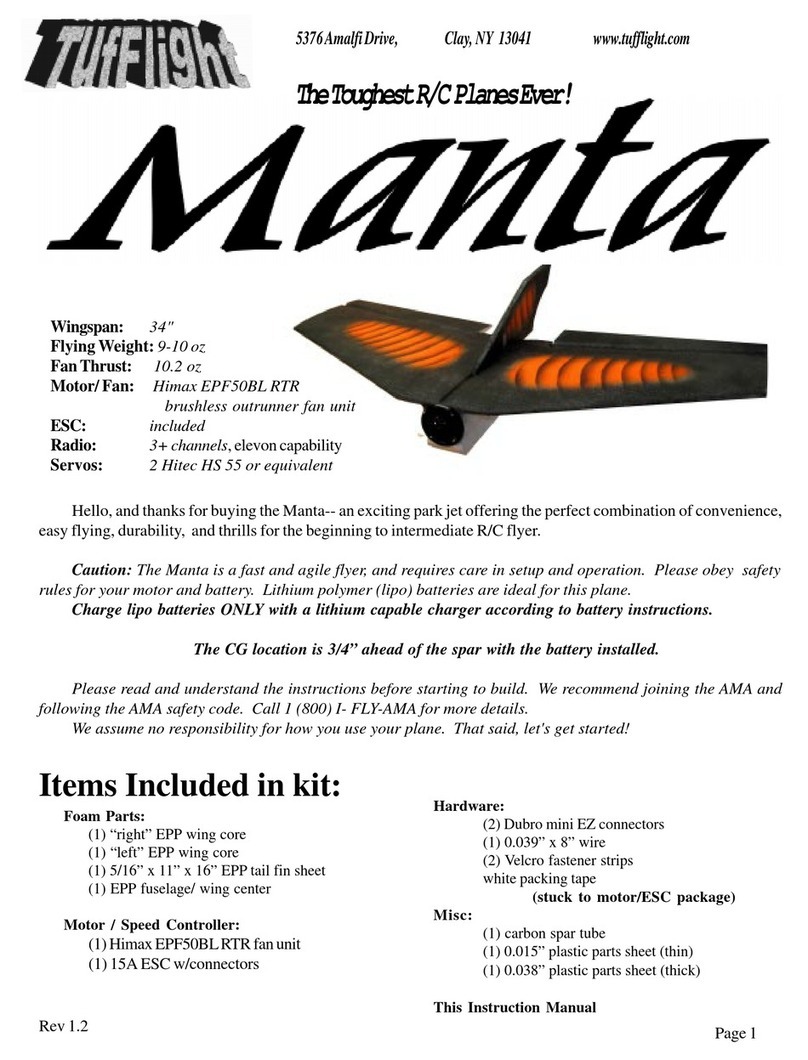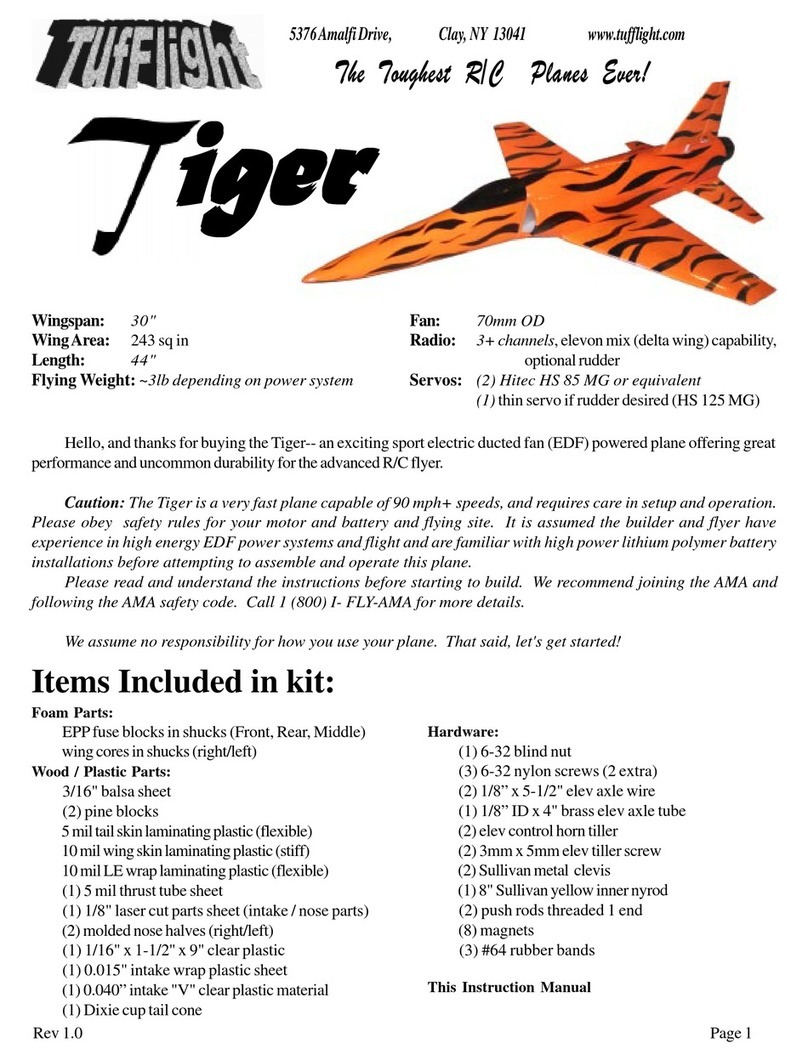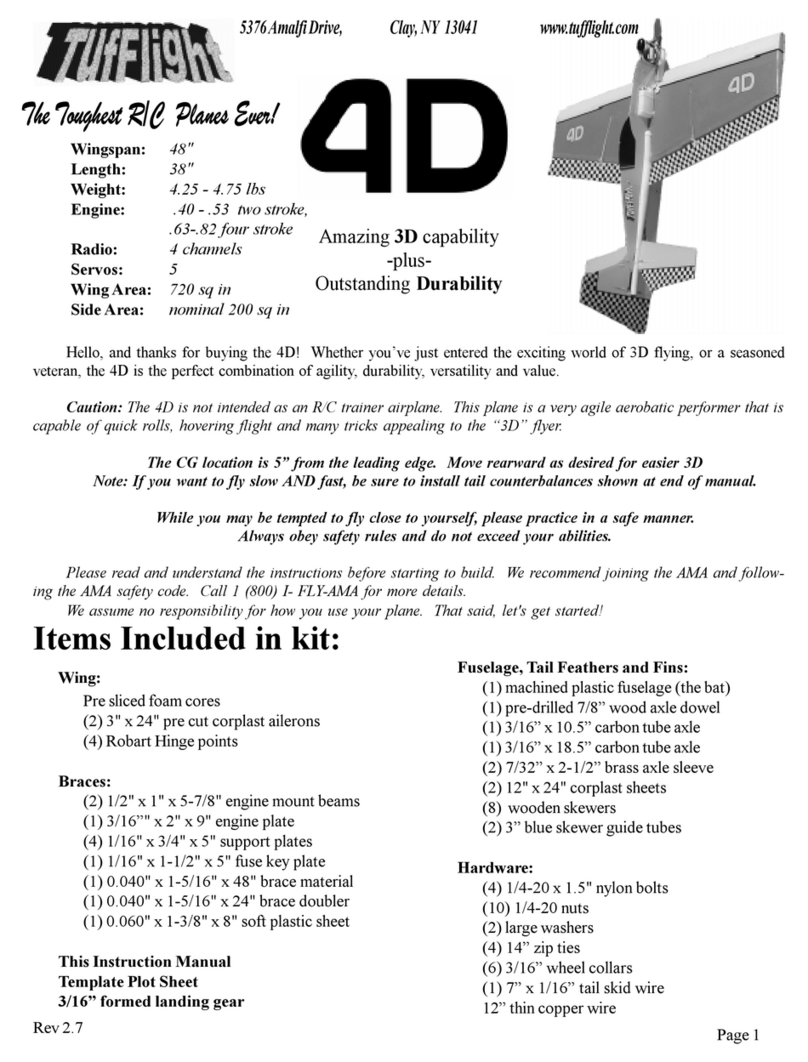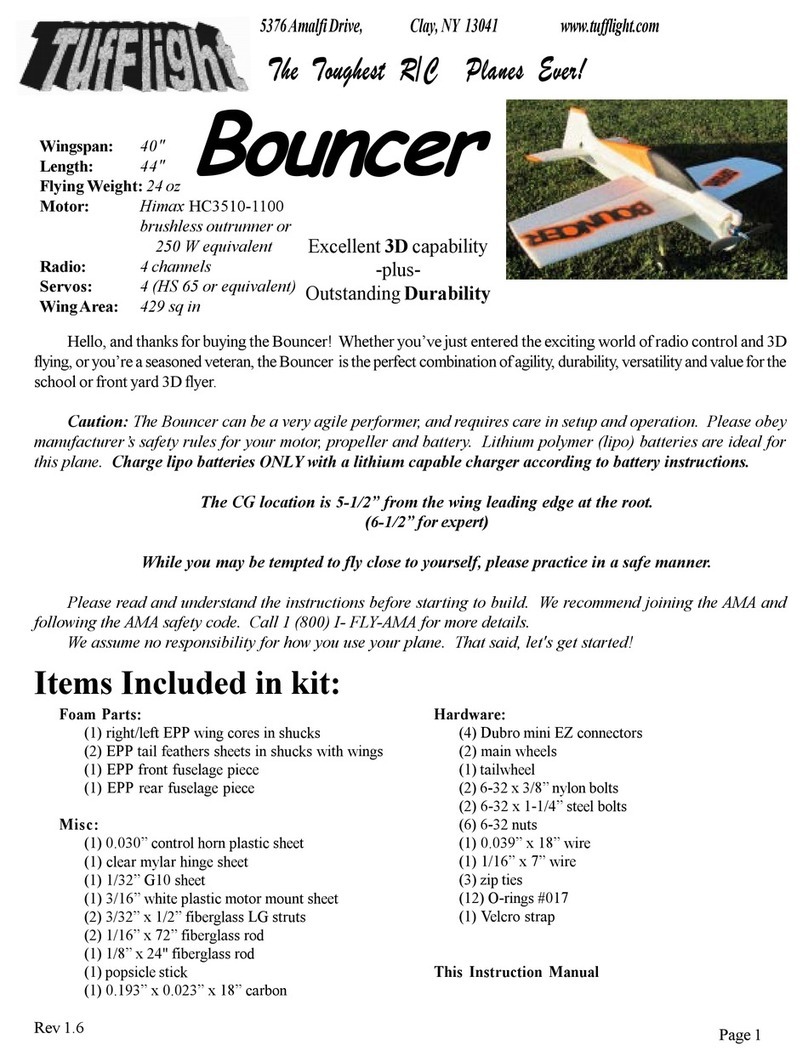
Page 3
Glues Needed:
You will need these glues to assemble your plane. Please do not substitute!
CA(cyanoacrylate) - medium and thin viscosities. Also accelerator spray. Me-
dium CA is used to bond EPP to balsa. Thin CA is used for balsa to balsa
joints-- especially in framing up the tail pieces and joining balsa sheeting.
Odorless (foam safe) thin is best for inner fuselage pieces.
“Gorilla Glue” or Elmers “Nano” Polyurethane Glue - high strength, light weight amber color,
expands while curing to penetrate and fill voids. Until recently the Elmers brand was sold as
“Ultimate Glue” or “Pro-Bond”. It expands more and cures faster when exposed to small
amount of water. Misting parts with a water spray bottle is recommended when spreading glue
onto parts to be bonded. This glue takes about 4 hours to cure at 70 degrees F.
Loc Tite “Sumo Glue” polyurethane Glue : Similar to amber colored polyurethanes
above, but goes on clear, then expands and cures white. DOES NOT SAND
easily. Tougher than amber polyurethane glue and cures much faster-- expansion fin-
ished in 20 minutes and ready to handle in 2 hours. Best choice for gluing clear
plastic control horns and other clear plastic parts in this kit.
Goop : Similar to silicone adhesive/sealant but MUCH stronger. The
only acceptable alternatives are Pacer Zap-a-Dap-a-Goo, PFM
or “Shoe Goo”. Goop is fuel proof and flexible. . Other
TufFlight kits rely heavily on this glue for many critical high strength
joints. Goop is relatively heavy, so use sparingly. May substi-
tute Goop for Sumo glue when gluing clear plastic parts if Sumo glue not available.
3M77 : There is no acceptable substitute. Used in covering adhesion to the EPP foam. The
wing gets much of its strength from the “skin” of the Ultracote Covering (use only Ultracote
as all other brands give inferior strength and adhesion to EPP)..
Do all spraying in a “spray safe” area, as overspray may be hazardous to your health, and will make
an annoying mess if carelessly applied. We find a large box placed on the floor makes a good "overspray
booth" as the spray settles rapidly, but it should be contained. Many modelers have never used this glue
in their hobby practices, but we find it
perfectly suited for foam wing con-
struction, and many other modeling
tasks.
* 3M77 Spray glue may be applied generously, as it
is lightweight.
* 3M77 overspray may be cleaned with odorless min-
eral spirits.
*We consider a "generous" or "heavy" coat to
be "bubbly" and cold to the touch after applied. A
good heavy coat takes about 20 seconds of spray
time to apply to an area roughly 2 feet by 3 feet.
































